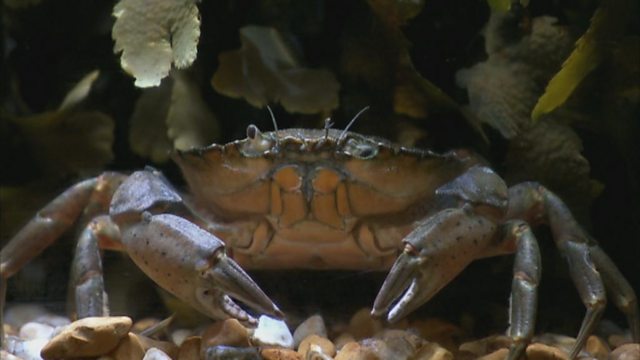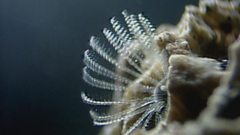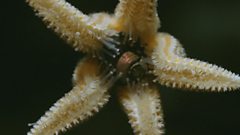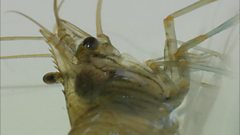
Reproductive cycle of crabs
Professor Richard Fortey investigates the reproductive cycle of crabs. The moulting process is where the female sheds her exoskeleton by releasing enzymes that digest the shell and then, through osmosis, takes in water. The increased pressure helps remove the shell completely. The male crab protects her during this delicate stage in an embrace, as he is attracted to her by the release of pheromones. Dr. Davie Wilcoxson explains that this embrace can last up to 10 days. After being released by the male, the female crab is referred to as being ‘berried’ as she carries a mass of eggs around with her for months. The free swimming larvae will eventually leave the mass and begin to feed on the plankton. The parasite sacculina is also discussed. This member of the barnacle family attaches itself to crabs during moulting. It alters the crab's behaviour so that it protects the sacculina and its eggs.
Duration:
This clip is from
More clips from Rock Pool Survivors
-
![]()
Climate change and barnacle distribution
Duration: 03:11
-
![]()
Predator prey relationships in rock pools
Duration: 04:15
-
![]()
Rock pools by night
Duration: 04:51
-
![]()
Homely hermit crabs
Duration: 03:41





